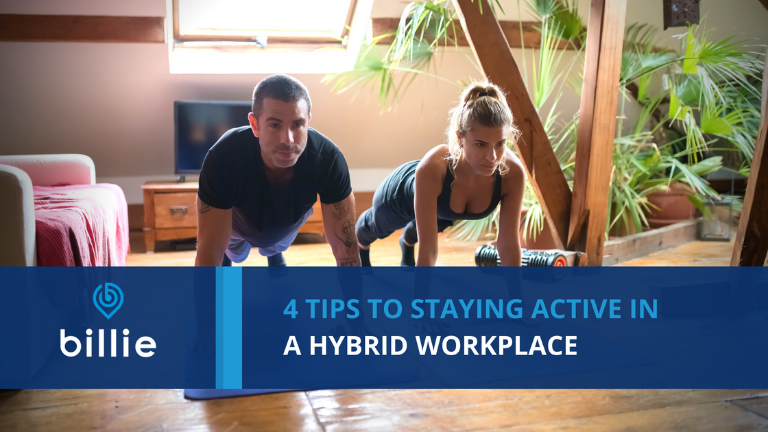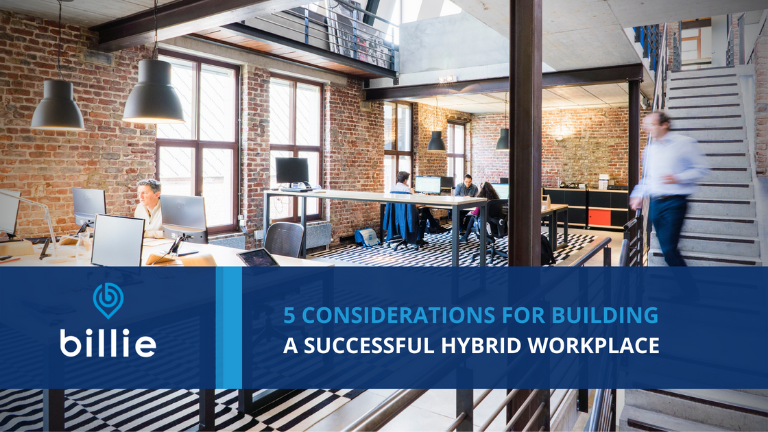5 Ways to Rework Your Workspace Using Urban Planning Principles
Since the inception of the modern office space in the early 18th century, how we envision, imagine, and design our ideal workspace has undergone dramatic changes that can only be described as leaps and bounds paralleling seismic economic and social changes. This forward momentum in office design has been especially prevalent over the past year and half as the global economy begins to slowly emerge from a pandemic that has undoubtedly changed how we envision the ideal office of today and tomorrow.
As a result of stay at home orders and the subsequent rise in remote work across the globe, the role of the modern day office needs to reflect the need to keep employees safe, foster inter-office relationships and collaboration, and provide a comfortable and distraction-free environment. In a recent survey conducted by Deloitte, 64% of organizations have a plan to be back in the office in some capacity. With this in mind, it’s more important now than ever to start reimaging your office so that you can facilitate a smooth return to office strategy for your employees.

How City Planning Can Help You Future Proof Your Office
City planning, also referred to as urban planning, is a technical and political process that dates back a few millennia to the time of the Ancient Egyptians; it combines art and science to give urban planners a tried and tested process to plan and create a city that feels familiar, functional, and futureproof. The same principles applied to designing a well planned city can be used to reconfigure, reorganize, and redesign your office space so that it is far more effective and efficient. But the most key consideration to this approach is designing your space for the most important assets in your company – your people.
Here are some ways you can rework and redesign your workspace using an approach borrowed from urban planning:
1. Keeping Your Employees In Mind
When you begin the process of redesigning your space to support the demands of a post-covid workplace, your core approach needs to be centered around your employees. Because of the rise of remote and hybrid work, planning your office to have socially distanced spaces that include bookable workspaces, non-bookable agile areas, work zones that are task-focused, and modular furniture to accommodate fluctuating in-office traffic are ways you can facilitate a more flexible workplace.
Amenities such as hand sanitizing stations or pop-up privacy booths also add another layer of accommodation that employees should appreciate as they transition from the comfort and privacy of their homes to the office. In particular, research has shown that workers often experience higher levels of stress and anxiety when in an open office environment – these privacy pods or booths provide your employees with a slice of quiet and comfort that they might have experienced at home (unless of course they had noisy kids, pets, or both!).

2. Zoning Your Workspace Using ‘Office Neighbourhoods’
The idea of using office neighbourhoods is a relatively new concept in office design that is based on the idea of neighbourhood based choice environments (NBCE) – the key takeaway here is creating ‘homes’ or ‘neighbourhoods’ for your employees to congregate, collaborate, and socialize in. Currently, offices are typically organized in either a more traditional layout that emphasizes having quiet workspaces with an available meeting space or a more bustling open office layout – the former can lead employees to feel more isolated while the latter can become either too chaotic or distracting to employees. What office neighbourhoods allow you to do is zone designated workspaces in your office for either an activity-based work approach, where you have certain zones that are ideal for workers needing some peace and quiet and other areas that are more suitable for collaboration, or using a team-based approach where you can designate spaces to employees that either have common work-related interests or who are part of a specific team.
Companies such as Uber are using this office neighbourhoods approach by segmenting communities within their offices based on department zones, where an open staircase unifies all of these neighbourhoods together. Another way that you can easily implement office neighbourhoods includes grouping similar departments or teams into neighbourhoods that are in close proximity to each other.
3. Encouraging Collaboration and Social Interaction
One of the main benefits of having an office is that it can serve as a central hub for collaboration and building your workplace culture. Some of the most well planned cities in the world have hubs or spaces where citizens can come together in some form or another – to implement this across your office, deconstruct workplace silos by adding relaxed seating to common or lounge areas, reconfigure furniture to allow for more traffic between departments, and add some sort of common activity such as a table game or a company-wide project to encourage a feeling of togetherness in your office. In addition to this, adding collaborative and casual spaces is a must – these are essential if you want to create areas that encourage your employees to socialize and build relationships that will hopefully strengthen your company’s culture.

4. Using Logical Layouts and Flow
When you’re in a well planned city, one of the telltale signs that a lot of thought and consideration has been put into its planning is the fact that it’s easily navigable. There are ample street signs, landmarks are easy to find, and the layout of the city itself has some logic to how it’s planned and designed. To apply this to your office design, make sure that there’s a logical flow between spaces that allows your employees to traverse from one space to another without much confusion. Adding signage that provides a sense of direction within your office space and creating a consistent design theme should allow you to create a workspace that is intuitive and easy to navigate for your employees or guests.
5. Giving Spaces an Identify and Consistency
If you’ve visited a well-planned metropolis such as Toronto or New York City, you’ll have noticed something that characterizes these places and gives them a sense of uniqueness and contributes to their overall identity – landmarks, distinctive architecture, and unique locations not only help create a sense of place but ties together neighbourhoods or commercial zones within certain parts of these cities. If you’d like to create distinctive zones or easily identifiable office neighbourhoods, you can implement a common and consistent design theme, which may include painting certain zones with a certain colour, having unique furniture in each of these designated spaces, and introducing accents or office landmarks to help give these spaces a sense and character.
 Tying Them All Together
Tying Them All Together
If you can apply as many of these suggestions when planning your office redesign, then you’ll have created a space that is organized, adaptable, and coherent. Whether it involves implementing the concept of office neighbourhoods, creating a distinctive identity in each space using design accents or unique pieces of furniture, or by adding some in-office signage, rethinking your offices design and layout from the lens of an urban planner may help you create a space that feels familiar, functional, and futureproof.
Some Important Considerations for A Post-COVID Workplace
In a post-pandemic world, one of the most important considerations will be to create spaces that support adequate social distancing, a more flexible hybrid work model, plenty of collaboration, and employee wellness and privacy. We’re going to see a move away from highly densified open-concept office designs to one that balances safety, privacy, and openness – open-plan offices, as sleek and modern as they seem, can pose a challenge to employee morale, trust, collaboration, and productivity. By coupling ideas that are at the core of city planning with new approaches to office design that have emerged as a result of the pandemic, you’ll be able to create a space that will help your employees feel much more safe, comfortable, and flexible.
Bibliography
Brady, M. (n.d.). 7 Urban Planning Ideas for Smarter Workplace Design. New Day Office. Retrieved September 2, 2021, from https://www.newdayoffice.com/blog/7-urban-planning-ideas-for-smarter-workplace-design
Deloitte. (n.d.). Executives share their plans for returning to the workplace. Deloitte. Retrieved September 2, 2021, from https://www2.deloitte.com/us/en/pages/human-capital/articles/2021-return-to-workplace-survey.html
Fayard, A.-L., Weeks, J., & Khan, M. (2021, April). Designing the Hybrid Office. Harvard Business Review. Retrieved September 2, 2021, from https://hbr.org/2021/03/designing-the-hybrid-office
Liu, J. (2020, February 5). From privacy booths to smart parking garages: These photos show what offices of the future will look like. Make It – CNBC. Retrieved September 2, 2020, from https://www.cnbc.com/2020/02/04/see-the-trends-in-office-design-that-will-change-the-way-we-work-2020.html
Mohawk Group. (2021, July 5). Believing in Better Workplaces: 8 Design Trends You Need to Know for 2022. Architectural Record. Retrieved September 2, 2021, from https://www.architecturalrecord.com/articles/15206-believing-in-better-workplaces-8-design-trends-you-need-to-know-for-2022
Morgan Lovell (Ed.). (2021). The Evolution of Office Design. Morgan Lovell. Retrieved September 2, 2021, from https://www.morganlovell.co.uk/the-evolution-of-office-design
oktra. (n.d.). Office Design Trends in 2021. oktra. Retrieved September 2, 2021, from https://www.oktra.co.uk/insights/office-design-trends-in-2021/
Paragon Design. (n.d.). Neighbourhood based choice environments. Paragon Design. Retrieved September 2, 2021, from https://paragondesignjoinery.com/neighbourhood-based-choice-environments/
Zenbooth. (n.d.). Office Neighborhoods: How They Work & How Your Company Can Use Them. Zenbooth. Retrieved September 2, 2021, from https://zenbooth.net/blogs/zenbooth-blog/office-neighborhoods-how-they-work-how-can-your-company-use-them-today

 Tying Them All Together
Tying Them All Together

